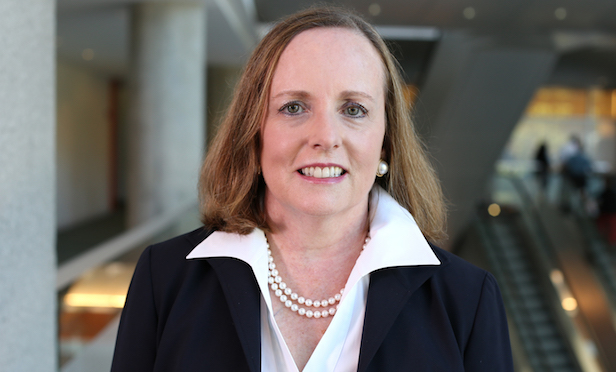
McLEAN, VA–Recently, Freddie Mac provided one of the few remaining affordable apartments left in Westchester County, NY with $50.5 million in rehab financing. The deal stands out for two reasons
1) the ownership partnership had $20,000 (yes, that is the right number of zeros) in capital and no capacity to take on additional liabilities; and
2) the property, the 454-unit Buena Vista apartments in Yonkers, NY, was built 42 years ago under a state program that financed low-income housing using tax abatements and low-interest bond funds. There were no low-income housing tax credits (LIHTC), in other words, that could be sold to raise additional equity.
Freddie Mac made it work, however, and we will get into how in a moment.
But here it should be pointed out that this is more than just another story about a Freddie Mac transaction. This transaction also gives the affordable housing community a glimpse into how future deals may have to be structured as LIHTCs continue to reprice downward — which they certainly will as comprehensive corporate tax reform gets underway in Congress — and the expected cutbacks at the Department of Housing and Urban Development materialize.
And that glimpse is this: Alternative resources, most especially soft money, may become the currency of the realm.
See, Freddie Mac was only able to get halfway there in financing the deal — it leveraged a RAD (rental assistance demonstration) contract to provide $50 million in hard debt. The state of New York closed the gap by kicking in $40 million in soft money.
“We view LIHTC equity as the first loss piece ahead of our loan,” Shaun Smith, senior director of Freddie Mac's Targeted Affordable Housing group, told GlobeSt.com. “ In this case, New York state invested soft debt that serves a similar purpose and permits greater rehab than might otherwise be possible.”
$100,000 Per Unit
When Buena Vista's owners — a limited liability partnership of small passive tax investors — approached Freddie Mac in 2016 the apartment community had reached a crisis point. Over the years it had fallen behind in maintenance and now needed about $100,000 per unit to catch up and update the apartments — an amount that is almost three times the average cost of rehabilitation the GSE finances.
New York state agreed to become involved and Freddie Mac worked closely with them to make the deal work, even traveling to the state to lobby for even more soft money to be added to the deal. Ultimately it took Freddie Mac's Targeted Affordable Housing team, the lender, RICHMAC of St. Paul, and the New York State Housing Finance Agency six months to negotiate the deal. HUD had approved a 20-year project-based Section 8 contract under RAD and using that, Freddie Mac was able to provide a $50.5 million, 30-year enhancement to bonds issued by New York's housing finance agency.
“I am proud of work we did,” Smith says. “Westchester is short of affordable housing.”
The Unstable LIHTC Market
Soft money may well come to be essential to many more affordable housing finance deals as current events continue to unfold.
To understand why, it helps to visualize what the typical capital stack looks like for a low income housing tax credit transaction. It starts with hard debt from lender based on the income stream, following by tax credit equity and then followed by various layers of soft debt. In addition, there is almost always a deferred development fee. Developers are paid a larger fee than in a conventional deal because these transactions don't have upside potential and the developer only owns a tiny percentage of the project.
The problem is since the presidential election, the tax credit equity piece has shrunk dramatically.
With Donald Trump's surprise victory, the market suddenly realized that comprehensive tax reform would probably become more than just a talking point and actually happen. As a result, the prices for equity investment — that is, the tax credit — have dropped and the yields have risen. (It also hasn't helped that interest rates have risen since the election.)
With investors unsure of the future corporate tax rate, as well as other related issues such as depreciation and carried interest, they are low-balling bids if they are even in the market at all.
“The few deals getting done are by CRA (Community Re-investment Act) motivated banks and they are assuming it will be a 20% corporate tax rate in their modeling,” Smith says.
The end result has been a market whose prices are resetting and a lot less equity available, Smith says.
Enter Soft Money
Soft money is debt, or rather soft debt, provided by a government institution such as HUD, or a state or city on very advantageous terms. These entities provide the money because they want to have a lever to enforce the affordability restrictions.
Soft debt, in fact, can serve many purposes. In this scenario it reduces the amount of hard debt necessary and thus reduces debt service, making lower rents possible.
“It is a very complicated puzzle trying to fit together these various pieces,” Smith says. That said, she added, “we are hopeful we can get around some of the equity shortage with these other funds.”


McLEAN, VA–Recently,
1) the ownership partnership had $20,000 (yes, that is the right number of zeros) in capital and no capacity to take on additional liabilities; and
2) the property, the 454-unit Buena Vista apartments in Yonkers, NY, was built 42 years ago under a state program that financed low-income housing using tax abatements and low-interest bond funds. There were no low-income housing tax credits (LIHTC), in other words, that could be sold to raise additional equity.
But here it should be pointed out that this is more than just another story about a
And that glimpse is this: Alternative resources, most especially soft money, may become the currency of the realm.
See,
“We view LIHTC equity as the first loss piece ahead of our loan,” Shaun Smith, senior director of
$100,000 Per Unit
When Buena Vista's owners — a limited liability partnership of small passive tax investors — approached
“I am proud of work we did,” Smith says. “Westchester is short of affordable housing.”
The Unstable LIHTC Market
Soft money may well come to be essential to many more affordable housing finance deals as current events continue to unfold.
To understand why, it helps to visualize what the typical capital stack looks like for a low income housing tax credit transaction. It starts with hard debt from lender based on the income stream, following by tax credit equity and then followed by various layers of soft debt. In addition, there is almost always a deferred development fee. Developers are paid a larger fee than in a conventional deal because these transactions don't have upside potential and the developer only owns a tiny percentage of the project.
The problem is since the presidential election, the tax credit equity piece has shrunk dramatically.
With Donald Trump's surprise victory, the market suddenly realized that comprehensive tax reform would probably become more than just a talking point and actually happen. As a result, the prices for equity investment — that is, the tax credit — have dropped and the yields have risen. (It also hasn't helped that interest rates have risen since the election.)
With investors unsure of the future corporate tax rate, as well as other related issues such as depreciation and carried interest, they are low-balling bids if they are even in the market at all.
“The few deals getting done are by CRA (Community Re-investment Act) motivated banks and they are assuming it will be a 20% corporate tax rate in their modeling,” Smith says.
The end result has been a market whose prices are resetting and a lot less equity available, Smith says.
Enter Soft Money
Soft money is debt, or rather soft debt, provided by a government institution such as HUD, or a state or city on very advantageous terms. These entities provide the money because they want to have a lever to enforce the affordability restrictions.
Soft debt, in fact, can serve many purposes. In this scenario it reduces the amount of hard debt necessary and thus reduces debt service, making lower rents possible.
“It is a very complicated puzzle trying to fit together these various pieces,” Smith says. That said, she added, “we are hopeful we can get around some of the equity shortage with these other funds.”

Want to continue reading?
Become a Free ALM Digital Reader.
Once you are an ALM Digital Member, you’ll receive:
- Breaking commercial real estate news and analysis, on-site and via our newsletters and custom alerts
- Educational webcasts, white papers, and ebooks from industry thought leaders
- Critical coverage of the property casualty insurance and financial advisory markets on our other ALM sites, PropertyCasualty360 and ThinkAdvisor
Already have an account? Sign In Now
*May exclude premium content© 2025 ALM Global, LLC, All Rights Reserved. Request academic re-use from www.copyright.com. All other uses, submit a request to [email protected]. For more information visit Asset & Logo Licensing.








